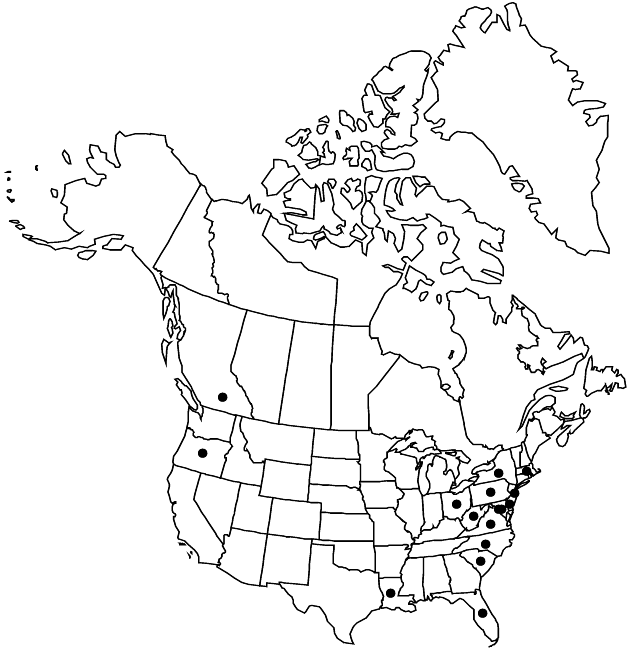Filago vulgaris
Fl. Franç. 2: 61. 1779.
Leaves: largest oblong to lanceolate, widest in proximal 2/3, 15–25(–30) × 2–3(–4) mm, ± undulate; longest distal capitular leaves 0.8–1.1 times head heights, acute. Heads in glomerules of (15–)20–35+, narrowly ± ampulliform, largest (4–)5–6 × 1.5–2 mm; largest glomerules 9–13 mm diam. Receptacles clavate. Pistillate paleae (except innermost) ± (10–)15 in (2–)3 series, spirally ranked, rounded in cross section, longest 3.5–4.2 mm; wings yellowish tinged reddish, apices erect. Innermost paleae pistillate, surrounding 14–25+ florets. Pistillate florets: outer ± (10–)15 epappose, inner 10–20+ pappose. Bisexual florets (1–)2–3(–4). 2n = 28 (British Isles, Bulgaria, Czechoslovakia, Greece).
Phenology: Flowering and fruiting (Apr–)Jun–Sep.
Habitat: Relatively dry, usually sandy soils, old fields, pastures, usually disturbed
Elevation: 10–1000 m
Distribution

B.C., Del., D.C., Fla., La., Md., Mass., N.J., N.Y., N.C., Ohio, Oreg., Pa., S.C., Va., W.Va., Eurasia, n Africa.
Discussion
Filago vulgaris arrived in North America before 1739 (G. Wagenitz 1976). Paucity of modern collections suggests that it may not spread much or persist for long in the flora area. Reports from southern Ontario, Alabama, Georgia, and Kentucky have not been confirmed by me. The illustration of “Filago germanica” in L. Abrams and R. S. Ferris (1923–1960, vol. 4) depicts F. pyramidata var. pyramidata.
I agree with G. Wagenitz’s (1965) nomenclatural analysis. Filago vulgaris replaced F. germanica Linnaeus, which is a later homonym of F. germanica Hudson, which in turn is a superfluous name for F. pyramidata Linnaeus.
Selected References
None.
